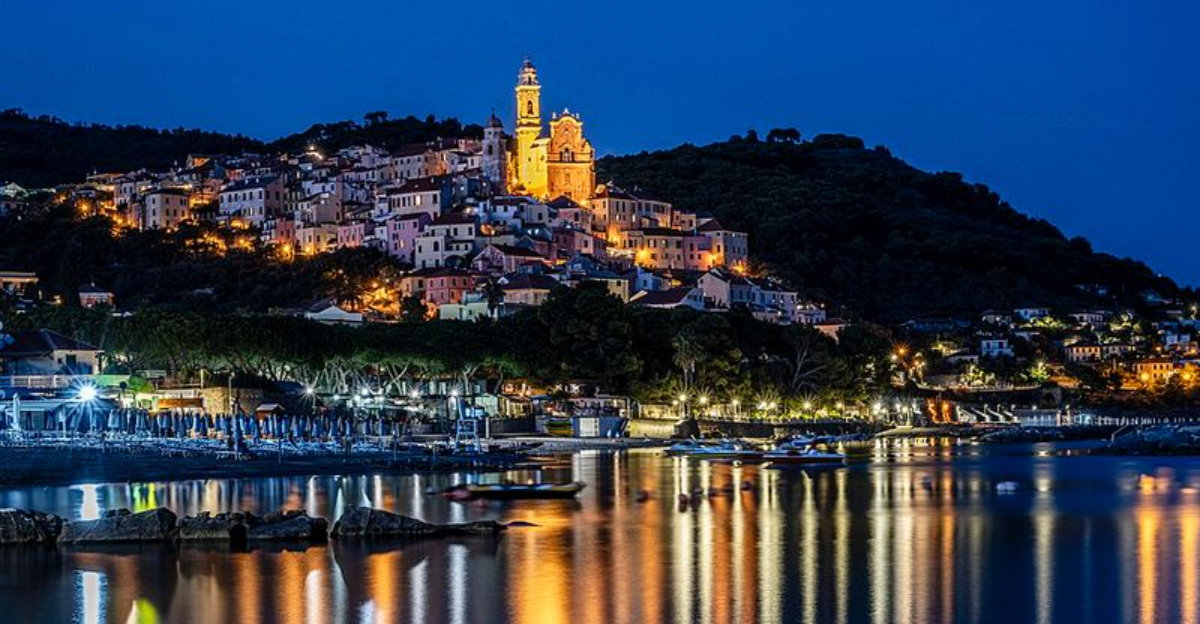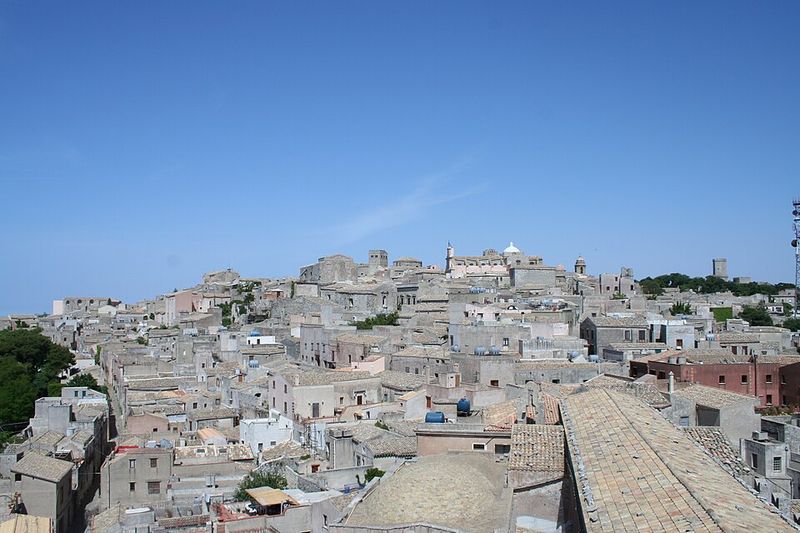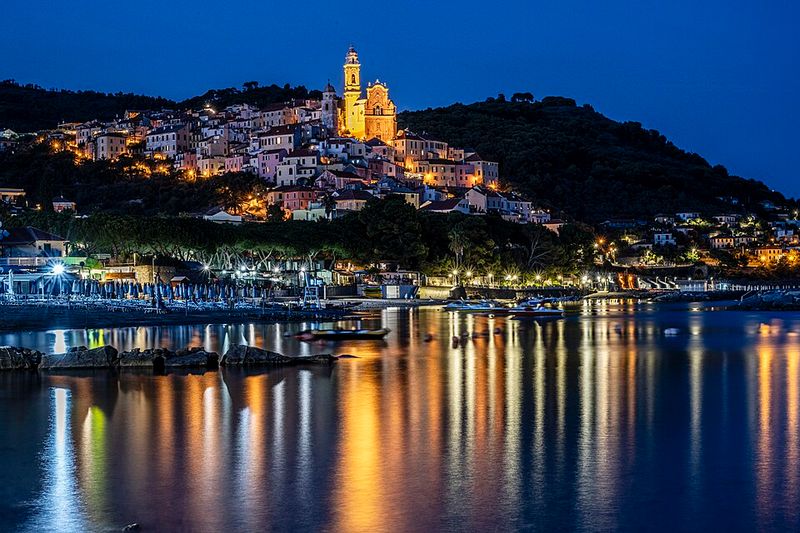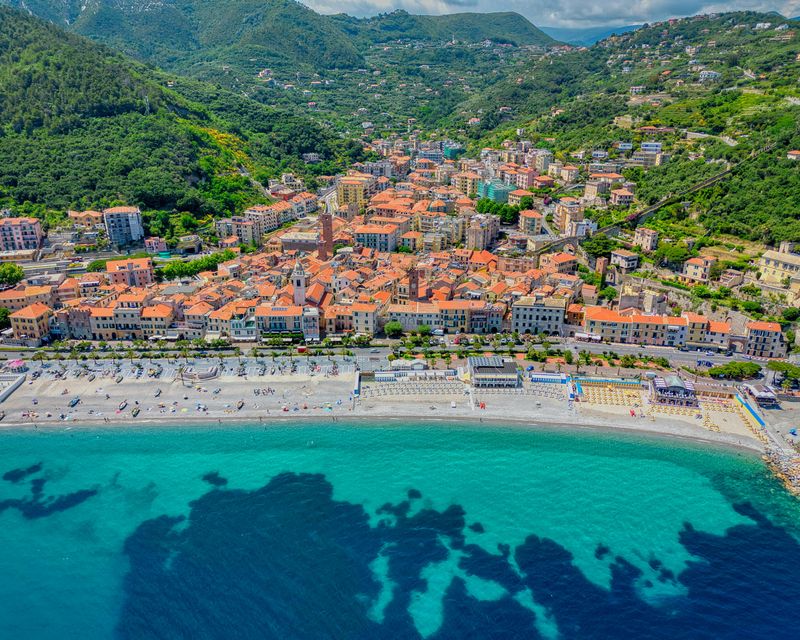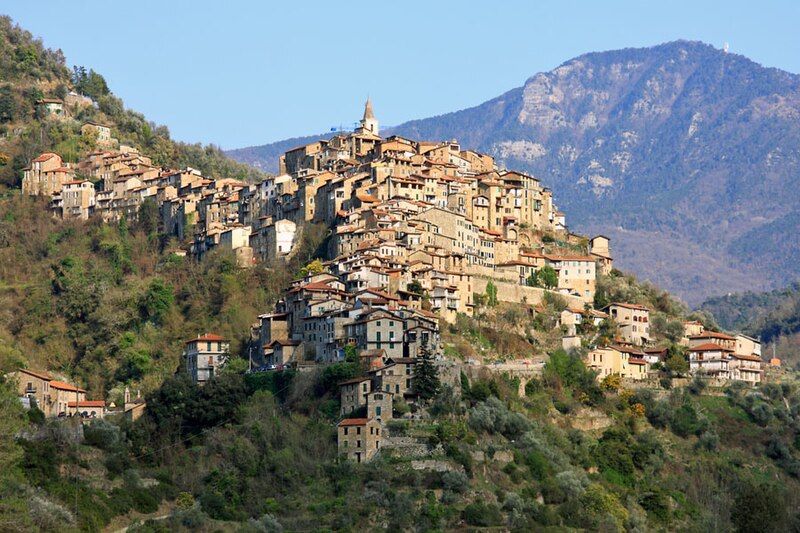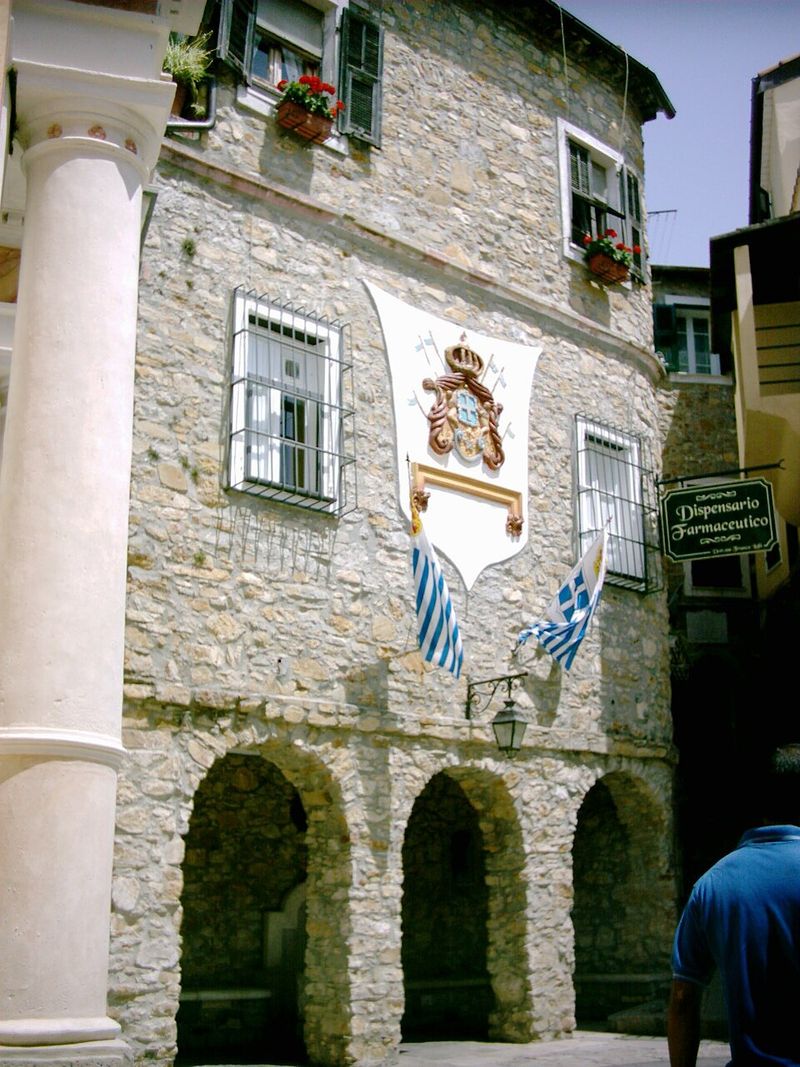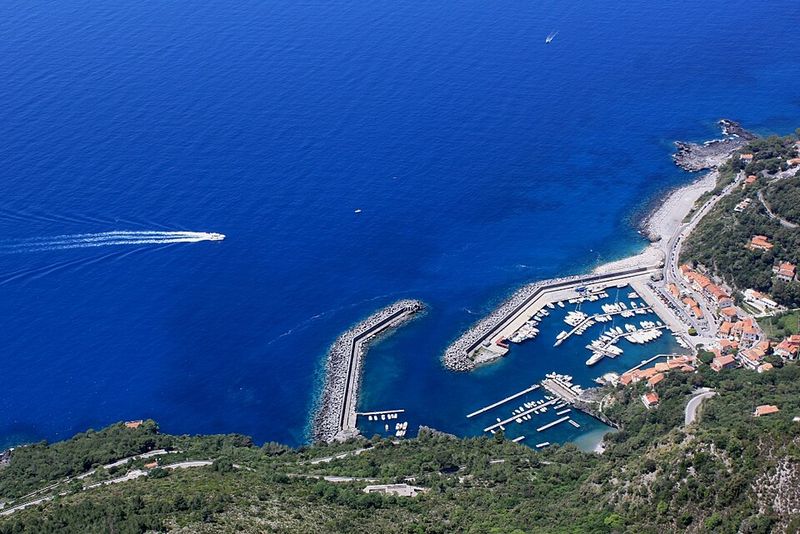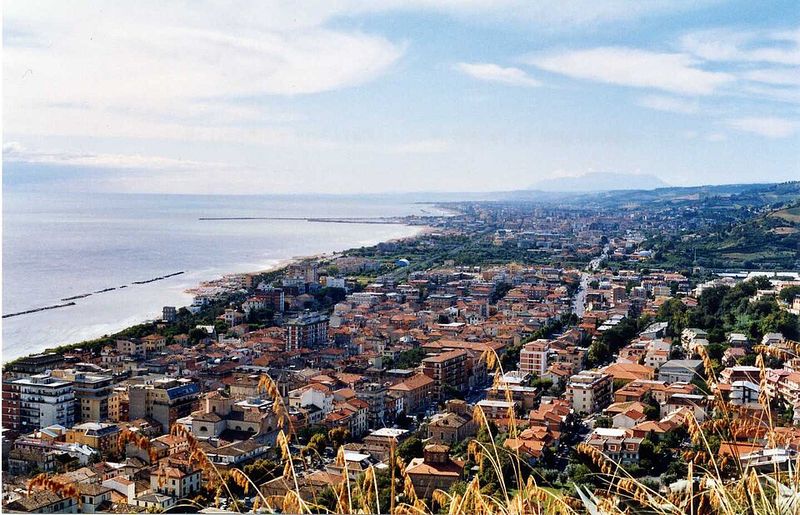Italy’s coastline hides a secret treasure: medieval towns perched on cliffs and hillsides where ancient stone meets sparkling waves. These villages tell stories of knights, merchants, and fishermen who built fortresses and churches high above the sea centuries ago. Walking their narrow cobbled streets feels like stepping back in time, with every corner offering breathtaking views of the Mediterranean or Adriatic below.
1. Erice, Sicily (Trapani) — stone lanes between sky and sea
Perched 750 meters above Trapani, Erice feels like a kingdom floating between heaven and earth. Norman walls wrap around this perfectly preserved village, where every corner whispers tales of ancient civilizations—from the Phoenicians to the Romans.
The Castle of Venus stands guard at the summit, named for the goddess once worshipped here. Wandering the stone lanes on a misty morning makes you feel like you’ve entered a fairytale.
From almost anywhere in town, you can gaze across the Egadi Islands scattered like emeralds in the turquoise sea. Local pastry shops sell famous almond cookies that have been made the same way for generations, perfect fuel for exploring medieval churches and hidden courtyards that make Erice unforgettable.
2. Cervo, Liguria — baroque facade, medieval bones
Rising like a fortress from the Ligurian coastline, Cervo clings to its hillside with dramatic flair. Maze-like alleys twist upward through honey-colored buildings, each turn revealing another slice of the glittering sea below.
The Church of San Giovanni Battista dominates the skyline with its stunning baroque facade—a theatrical backdrop for summer concerts that echo through the ancient streets. Medieval bones support baroque beauty here, creating an architectural time capsule.
Artists have long been drawn to Cervo’s magical light and storybook setting. Tiny shops tucked into centuries-old walls sell handmade ceramics and local olive oil. Standing at the top, with waves crashing below and history surrounding you, it’s easy to understand why this borgo captivates every visitor.
3. Castelsardo, Sardinia — castle over a cobalt gulf
Crowned by the imposing Doria Castle, Castelsardo commands attention from every angle. This medieval citadel town sits on a rocky hill that seems to rise straight from the Gulf of Asinara’s cobalt waters.
Narrow lanes tumble downward like a stone waterfall, lined with artisan shops where locals still weave traditional baskets from dwarf palms. The castle houses a fascinating museum filled with Mediterranean history spanning centuries.
Sunset here paints the sky in shades of orange and purple, silhouetting the fortress against the horizon. During Easter, the town hosts haunting processions that date back hundreds of years. Whether you’re exploring ancient ramparts or sampling fresh seafood in a cliffside restaurant, Castelsardo delivers unforgettable coastal magic.
4. Bosa, Sardinia — pastel riverside rising to Malaspina Castle
Bosa looks like someone spilled a rainbow along the Temo River. Pastel houses in coral, butter yellow, and sky blue climb the hillside toward the 12th-century Malaspina Castle, also called Serravalle, watching from above.
This riverside town feels different from typical Sardinian villages—its Spanish influence shows in the architecture and atmosphere. The old tannery district along the water has been transformed into galleries and cafes, but still tells stories of leather workers from long ago.
Beaches lie just minutes away along the coast, offering golden sand and crystal-clear water. Climbing to the castle rewards you with sweeping views over terracotta rooftops to the sea beyond. Local Malvasia wine, produced in the area for centuries, tastes even better when sipped overlooking this colorful masterpiece.
5. Noli, Liguria — medieval maritime republic on the sand
Few medieval towns can claim they sit right on the beach, but Noli does exactly that. Once a proud Maritime Republic alongside Venice, Genoa, Pisa, and Amalfi, this gem earned its place among Italy’s most beautiful villages.
Ancient towers still pierce the skyline, reminders of when Noli controlled trade routes and defended its independence fiercely. You can literally walk from a 13th-century church straight onto soft sand and into the waves.
The town’s compact medieval center packs incredible history into a small space—castle ruins, Romanesque gates, and frescoed buildings all within minutes of each other. Summer brings beachgoers, but the historic quarter maintains its authentic character year-round. Noli proves that medieval grandeur and seaside relaxation can coexist perfectly in one unforgettable location.
6. Finalborgo (Finale Ligure), Liguria — walled jewel just inland
Just a couple of kilometers from the Ligurian coast, Finalborgo stands as one of Italy’s best-preserved walled villages. The Marquises Del Carretto ruled from this fortified borgo, leaving behind palaces, churches, and defensive towers that still stand proud.
Walking through the gates feels like entering a living museum where artisans still practice traditional crafts. Shops selling ceramics, leather goods, and local specialties fill medieval buildings along cobbled lanes.
The town square hosts markets and festivals that have occurred for centuries, while cafes serve focaccia and coffee beneath ancient arcades. Though technically inland, the sea breeze reaches Finalborgo, reminding visitors that beaches are just minutes away. This combination of mountain-backed fortifications and coastal proximity creates a unique atmosphere found nowhere else along the Riviera.
7. Verezzi (Borgio Verezzi), Liguria — hamlets with sea-view piazzas
Verezzi isn’t one town but four stone hamlets—Crosa, Piazza, Poggio, and Roccaro—clinging to slopes above Borgio like birds’ nests. Each tiny settlement has its own character, connected by paths that wind through olive groves and past ancient stone walls.
The Teatro delle Pietre summer festival transforms these medieval spaces into magical outdoor stages, with the glittering coastline as backdrop. Imagine watching Shakespeare performed in a piazza built centuries ago, with sea breezes cooling the warm evening air.
Stone houses seem to grow from the rock itself, and every corner offers postcard views down to the Ligurian Sea. Getting lost here means discovering hidden courtyards, tiny chapels, and viewpoints that take your breath away. Verezzi proves that sometimes the smallest places leave the biggest impressions.
8. Dolceacqua, Liguria — arches, a humpback bridge & sea nearby
Dolceacqua’s famous humpback bridge arches gracefully over the Nervia River, connecting the medieval quarter to newer neighborhoods. This iconic stone span has inspired artists for generations, including Claude Monet, who painted it during his travels.
Above the village, castle ruins of the Doria family loom dramatically, their crumbling walls telling stories of feudal lords and ancient battles. Medieval lanes twist upward beneath stone arches, where laundry still hangs from wrought-iron balconies.
Though set in a river valley, Dolceacqua sits just a few kilometers from Ventimiglia and the Mediterranean coast. The town produces excellent Rossese wine, celebrated during an August festival when the streets fill with music and tastings. Walking these atmospheric alleys, with the castle watching from above and the sea nearby, creates an unforgettable Italian experience.
9. Apricale, Liguria — stacked stone houses, 13 km from the sea
Apricale spirals up its hilltop like a stone sculpture, officially recognized among Italy’s most beautiful villages. About 13 kilometers from the Riviera, this medieval masterpiece seems worlds away from coastal crowds.
Houses stack upon each other in concentric rings, their gray stone walls weathered by centuries of mountain winds. The village plan follows ancient defensive logic, with narrow passages designed to confuse invaders and protect residents.
Castle ruins crown the summit, offering panoramic views that stretch to the distant sea on clear days. Murals painted on building walls throughout town add splashes of color to the medieval stone, depicting local legends and history. Apricale’s name comes from the Latin word for “sunny,” and indeed this hillside catches golden light that makes the ancient stones glow at sunset.
10. Seborga, Liguria — the quirky principality above Bordighera
Seborga declares itself an independent principality, complete with its own currency, stamps, and elected prince. While Italy doesn’t officially recognize this claim, the playful identity adds quirky charm to an already enchanting hill village.
Narrow stone lanes wind past medieval buildings adorned with the principality’s blue-and-white flags. Shops sell Seborgan “luigini” coins as souvenirs, and locals enthusiastically share the town’s unusual story with visitors.
Perched above Bordighera, Seborga offers spectacular views down to the Ligurian coastline. The village maintains authentic medieval character despite its whimsical modern twist—ancient churches, stone archways, and flower-draped balconies create genuine historic atmosphere. Whether you consider it a principality or simply a charming borgo, Seborga delivers unforgettable coastal views and memorable Italian eccentricity in equal measure.
11. Maratea, Basilicata — the town of 44 churches above coves
Nicknamed “the town of 44 churches,” Maratea packs remarkable spiritual heritage into its hillside streets. The medieval village gazes down from its perch to a string of gorgeous beaches and hidden coves along the Tyrrhenian coast.
A massive Christ statue stands guard on Monte San Biagio above town, arms outstretched toward the sea—Italy’s answer to Rio’s famous monument. Hiking up rewards you with breathtaking views that span the entire Gulf of Policastro.
The historic center winds through steep lanes past baroque facades and ancient doorways, each church telling stories of centuries of devotion. Despite its beauty, Maratea remains wonderfully uncrowded compared to more famous coastal destinations. Swimming in the crystal waters below, then climbing back to explore medieval streets, makes for an ideal Italian day.
12. Termoli, Molise — fortified headland over the Adriatic
Termoli’s Borgo Antico sits on a rocky finger of land pointing into the Adriatic, waves crashing against ancient fortifications on three sides. The Swabian castle stands guard at the promontory’s tip, its massive walls a testament to centuries of defending this strategic position.
A beautiful Romanesque cathedral rises nearby, its bell tower visible for miles along the coast. Walking the medieval streets feels like exploring a ship made of stone, with sea breezes and salt air filling every corner.
Ferries depart from Termoli’s harbor for the Tremiti Islands, making this historic town a gateway to island adventures. Fresh seafood restaurants line the waterfront, serving the day’s catch with views across the blue Adriatic. Termoli combines fortress history with beach-town energy in Molise’s most captivating coastal setting.
13. Vasto, Abruzzo — terrace town above the Golfo di Vasto
Vasto’s historic center perches on a natural terrace high above the Golfo di Vasto, where the Adriatic stretches endlessly toward the horizon. The Castello Caldoresco and elegant Palazzo d’Avalos anchor the medieval quarter, their Renaissance additions blending with older fortifications.
Gardens and viewpoints edge the clifftop, offering spectacular panoramas over rooftops to the sea below. Long sandy beaches curve along the coast beneath the town, easily reached by winding roads or steep pathways.
The historic center maintains authentic character, with local families still living in centuries-old buildings and traditional shops selling Abruzzo specialties. During summer, the beach becomes lively with Italian vacationers, but the hilltop old town remains peacefully atmospheric. Vasto delivers the best of both worlds—medieval exploration above, beach relaxation below, all in Abruzzo’s welcoming embrace.
14. Grottammare Alta, Marche — upper medieval borgo by the beach
Grottammare splits into two distinct worlds: the modern beach resort along the Riviera delle Palme, and Grottammare Alta, the medieval borgo perched on the hill above. Climbing to the upper town transports you from seaside cafes to centuries-old stone streets in minutes.
The walled quarter centers on Piazza Peretti, named for Pope Sixtus V, who was born here. Sea-view loggias offer perfect spots to gaze across terracotta roofs to the Adriatic sparkling below.
Ancient gates and defensive walls remind visitors that this hilltop once protected residents from pirates and invaders. Today, the main danger is getting lost in the atmospheric lanes—though that’s part of the charm. After exploring medieval churches and artisan workshops, you can descend to the beach for a swim, enjoying history and relaxation in one remarkable location.
